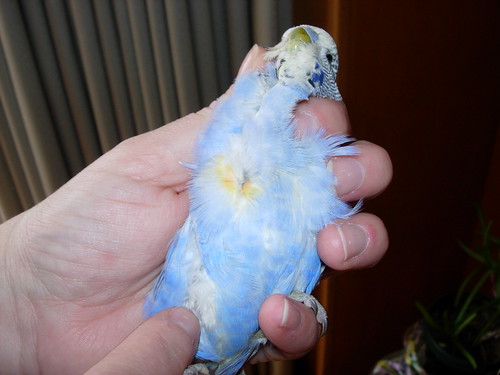Dentistry: Day 2 was dentistry. That's right, everything in part 1 was just tuesday. Dentistry is actually less horrible than you'd expect, although the high-pitched whine of the ultrasonic scaler is still slightly distressing.
Basically, we took out teeth until we got tired of it. Depending on how many roots a tooth has, it's more or less complex, but they all involve sticking a "dental elevator" down into the tooth socket and pushing and rotating until the tooth jiggles out. Only one of the drills was working, so there was a rather awkward queue because everyone lifted up their table with the dead dog on it, and carried it over (because the drill is on a short power cord). So at any given point, there was a group using the drill, and a group next to them that had brought over their giant metal table.
Dogs don't really get cavities. We were actually using the drill for extractions. You use it to slice the tooth apart between the roots, and also to expose the roots from under the bone. The other thing we did was to practice local blocks. As most of the nerves come out of specific holes in the skull, the aim was to feel for those holes and see if we could stick the needle into them. The result was a dog mouth full of needles.
Orthopaedics: Half of day 3 was dedicated to the wonderful world of metal bone implants. Drills, pins, plates, screws, wire, interlocking nails, prosthetic nylon ligaments. There were too many things to practice so each group only picked a few things. Depending on what you picked, the surgeon would come over with the bone saw and make a fracture in your bone of choice.
The first thing my partner and I did was an ulnar fracture. This involved two pins down the shaft of the bone for stability, and a wire inserted in a figure eight to create tension.
Then I did a knee repair of a ruptured cranial cruciate ligament (in people referred to as an ACL). Since it wasn't actually ruptured, I had to go into the joint and cut the ligament, but that's normally part of the procedure since you have to inspect the joint anyway. Then you drill holes into the tibia that are used to hold the nylon prosthesis into a position that approximates the function of the ligament. The nylon loops around a bit of bone in the back, goes around the tibia via the holes, and voila.
My classmates got up to some other exciting stuff, like external skeletal fixation, where the implants come out of the skin and get connected by bars. They look pretty impressive.
Ophthalmology: The last thing we did was eye and eyelid surgery, with a boarded ophthalmologist. It's kind of weird and creepy, but it's a lot more comforting to do it on a dead dog, where you know it doesn't matter even if you somehow exploded the eyeball or lost it or something. The downside is that since we only had one eye each to work with, a whole bunch of lid surgeries on one lid tend to make it look like franken-dog. The most exciting part was cutting or sewing onto the cornea, because it's amazing that you can even do that. It's layered like an onion, so if you have to remove a diseased piece, you cut a little square and it just peels off. Another cool thing you can do is actually use the conjunctiva like a bandage, where you cut a little pedicle flap out of the surrounding membranes, bring it across the eye, and sew it onto the cornea. I wanted to include the picture of this, but dead dog eye surgery is really creepy so I thought better of it.
Also, the lens is surprisingly soft and pliant. You think of it as a hard thing, but it isn't.
Unfortunately, as I was squishing it gently in amazement, I broke it and it burst apart into a pile of clear, gelatinous goo. Whoops. The eruption of laughter at another table a few minutes later indicated that other students encountered this unexpected turn of events as well.



.JPG)
.JPG)
.JPG)




